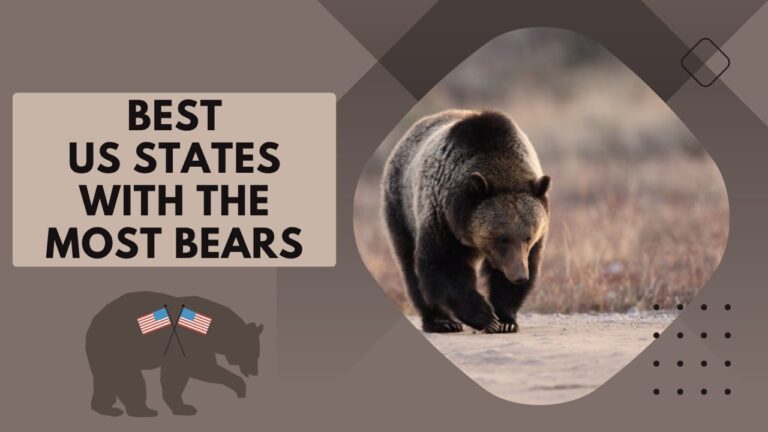Welcome to the wild world of bears in the United States! With a diverse range of habitats, from lush forests to icy tundras, this country is a haven for these magnificent creatures. If you’re a bear enthusiast, you’re in for a treat, as we’re about to embark on an exciting journey through some of the best US states with the most bears.
We’ll delve into the habitats, species, and conservation efforts that make these states the ultimate bear countries. Our adventure will not only satisfy your curiosity, but it will also provide you with the knowledge to appreciate and respect these powerful animals. So, grab your binoculars and let’s explore bear country together!
But before delving into the bear populations across the United States, it might also be worth learning about the potentially hazardous wildlife you may encounter in Kentucky, so you can stay prepared and vigilant during your outdoor adventures.
Top States to Encounter Majestic Black Bears in America: From Alaska to Florida
Embark on a journey through the diverse landscapes of the United States, as we delve into the fascinating world of black bears that inhabit this beautiful nation. From coast to coast, these captivating creatures can be found in various habitats, each offering unique opportunities for wildlife enthusiasts to observe and admire.
In this table, we present the estimated black bear populations for each state, highlighting the thriving bear communities that call these regions home. Use this valuable resource as your guide to better understand the distribution of black bears across the country, and let it inspire your next adventure into the wild heart of America.
| State Name | Black Bear Population |
|---|---|
| Alabama | 100-200 |
| Alaska | 100,000 |
| Arizona | 3,000 |
| Arkansas | 5,000 |
| California | 30,000 |
| Colorado | 10,000-12,000 |
| Connecticut | 800 |
| Delaware | none |
| Florida | 4,000 |
| Georgia | 4,000-5,000 |
| Hawaii | none |
| Idaho | 20,000-30,000 |
| Illinois | none |
| Indiana | none |
| Iowa | none |
| Kansas | none |
| Kentucky | 1,000 |
| Louisiana | 500-750 |
| Maine | 24,000-36,000 |
| Maryland | 2,000 |
| Massachusetts | 4,500 |
| Michigan | 15,000-19,000 |
| Minnesota | 12,000-15,000 |
| Mississippi | 100-150 |
| Missouri | 540-840 |
| Montana | 15,000 |
| Nebraska | Low/rare sightings |
| Nevada | 300-500 |
| New Hampshire | 6,100 |
| New Jersey | 5,000 |
| New Mexico | 5,000-6,000 |
| New York | 6,000-8,000 |
| North Carolina | 20,000 |
| North Dakota | none |
| Ohio | 50-100 |
| Oklahoma | 2,000 |
| Oregon | 25,000-30,000 |
| Pennsylvania | 20,000 |
| Rhode Island | 5-10 (new population) |
| South Carolina | 900 |
| South Dakota | Low/rare sightings |
| Tennessee | 7,000 |
| Texas | 30-40 |
| Utah | 4,000 |
| Vermont | 4,600-5,700 |
| Virginia | 17,000 |
| Washington | 25,000-30,000 |
| West Virginia | 12,000-14,000 |
| Wisconsin | 24,000-31,000 |
| Wyoming | unknown/robust population |
Alaska: The Last Frontier
Alaska, known as the Last Frontier, is home to the highest concentration of bears in the United States. With an estimated 30,000 brown bears and 100,000 black bears, it’s a bear lover’s paradise. The state boasts an incredible variety of ecosystems, from the Arctic tundra to the lush temperate rainforests, providing a perfect environment for bears to thrive. In particular, the Katmai National Park and Preserve and Admiralty Island are known for their exceptional bear-watching opportunities.
Alaska’s remote wilderness also means you’ll encounter the bears in their most natural habitat, far from human development. However, with great beauty comes great responsibility; Alaska’s bears face threats from habitat loss, climate change, and hunting. As a result, the state has implemented strict regulations to protect these magnificent creatures.
California: The Golden State’s Black Bears
California, the Golden State, is home to a thriving black bear population, estimated at around 35,000 individuals. These bears primarily inhabit the Sierra Nevada Mountains and the state’s vast forests. The iconic Yosemite National Park offers fantastic opportunities to observe black bears in their natural habitat. As the state’s bear population has grown, so have efforts to protect and manage these animals.
California’s Department of Fish and Wildlife actively monitors bear populations and implements measures to reduce human-bear conflicts. As a visitor, you can contribute to these efforts by practicing proper food storage techniques and respecting the bears’ natural environment.
Maine: The Pine Tree State’s Black Bear Haven
Maine, the Pine Tree State, is home to the largest black bear population in the eastern United States, with an estimated 35,000 bears roaming its vast forests. The bears can be found across the state, but are particularly abundant in the northern regions, such as Baxter State Park and the Allagash Wilderness Waterway. Maine’s dense forests provide an ideal habitat for these elusive animals, offering abundant food sources and plenty of hiding spots.
The state’s wildlife management practices have been successful in maintaining a healthy bear population, and ongoing research and monitoring efforts contribute to their conservation. When exploring Maine’s bear country, it’s essential to follow bear safety guidelines and respect the natural habitats of these magnificent creatures.
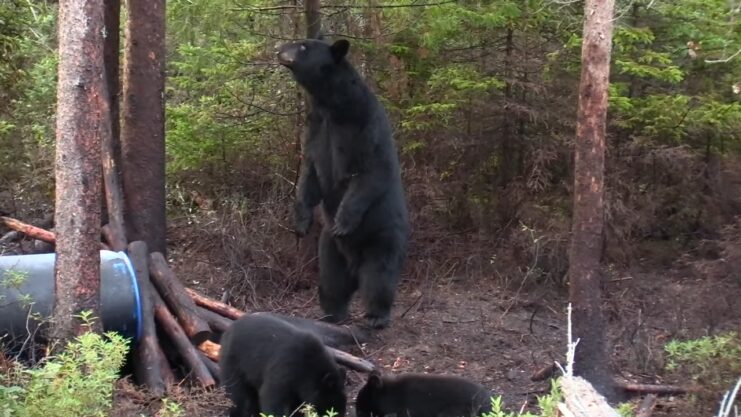
Oregon: Beaver State
Oregon, the Beaver State, boasts a significant black bear population, estimated between 25,000 and 30,000 individuals. These bears inhabit diverse ecosystems across the state, from coastal rainforests to the Cascade Mountains. Oregon’s vast protected areas, including the Willamette National Forest and the Rogue River-Siskiyou National Forest, provide excellent opportunities for bear watching and wildlife photography.
The Oregon Department of Fish and Wildlife is dedicated to conserving and managing the state’s black bear population, implementing measures to minimize human-bear conflicts and protect their habitats. As a visitor to Oregon’s bear country, be prepared to follow bear safety recommendations and support local conservation efforts.
Washington: The Evergreen State’s Bear Wonderland
Washington, the Evergreen State, boasts a rich biodiversity, making it an ideal habitat for a wide range of wildlife, including bears. With an estimated 25,000 black bears and a small population of grizzly bears, Washington offers ample opportunities for bear enthusiasts to observe these incredible creatures. The North Cascades National Park is one of the few areas where grizzly bears can still be found, though sightings are extremely rare.
Olympic National Park, on the other hand, provides excellent opportunities for black bear sightings. The state is committed to preserving its bear populations, and numerous conservation organizations work tirelessly to protect their habitats and ensure their survival. When visiting Washington’s bear country, be prepared to practice responsible bear viewing techniques and contribute to ongoing conservation efforts.
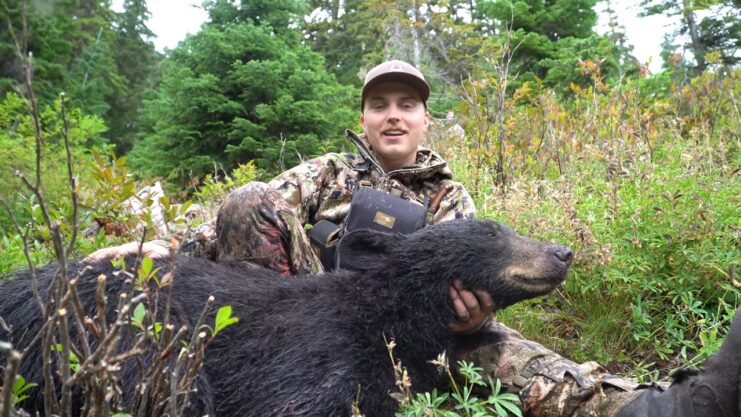
Wisconsin: The Badger State
Wisconsin, known as the Badger State, boasts a robust black bear population, estimated between 24,000 and 31,000 individuals. The bears predominantly inhabit the northern and central regions of the state, where lush forests and wetlands provide an ideal habitat. The Chequamegon-Nicolet National Forest and the Flambeau River State Forest are popular destinations for bear watching and offer visitors the chance to learn about the bears’ ecology and behavior.
Wisconsin’s Department of Natural Resources actively manages and monitors the bear population, ensuring their conservation and long-term sustainability. As a responsible visitor, remember to adhere to bear safety recommendations and support local conservation efforts.
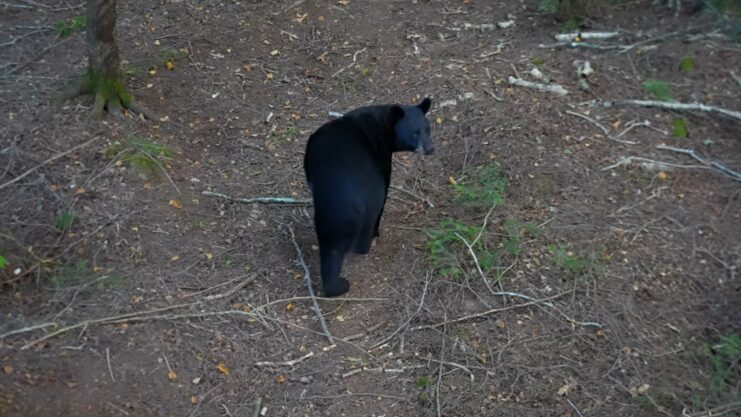
Idaho: The Gem State
Idaho, also known as the Gem State, is home to a healthy population of black bears, estimated between 20,000 and 30,000 individuals. These bears inhabit a variety of ecosystems throughout the state, from dense forests to rugged mountain terrains. Idaho’s vast wilderness areas and national forests, such as the Sawtooth National Forest and the Frank Church-River of No Return Wilderness, provide excellent opportunities for bear enthusiasts to observe these magnificent creatures.
The state’s wildlife management programs prioritize the conservation of black bears and their habitats, ensuring a sustainable coexistence between bears and humans. When exploring Idaho’s bear country, remember to practice bear safety guidelines and respect the natural environment these animals call home.
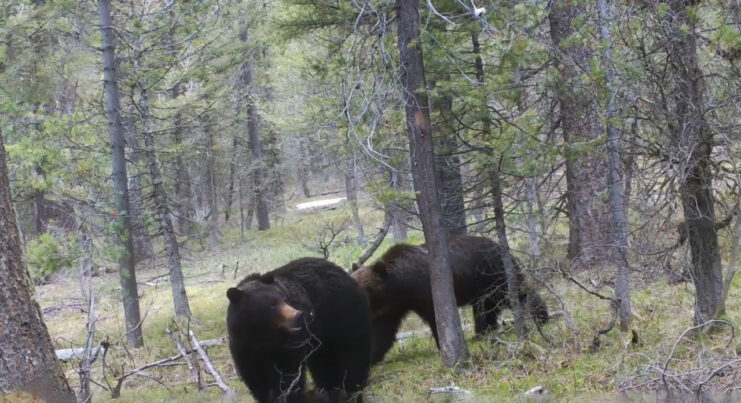
Minnesota: Land of 10,000 Lakes
Minnesota, the Land of 10,000 Lakes, is home to a thriving black bear population, estimated between 12,000 and 15,000 individuals. These bears primarily inhabit the northern forests, where the state’s numerous lakes, rivers, and wetlands provide ample resources for their survival. The Superior National Forest and the Boundary Waters Canoe Area Wilderness are popular destinations for bear enthusiasts, offering excellent opportunities for wildlife viewing and education.
Minnesota’s Department of Natural Resources actively monitors and manages the black bear population, promoting their conservation and coexistence with humans. When visiting Minnesota’s bear country, remember to follow bear safety guidelines and respect the animals’ natural habitats.
Colorado: Centennial State
Colorado, the Centennial State, is home to an estimated 10,000 to 12,000 black bears, inhabiting diverse landscapes from alpine forests to the Rocky Mountains. The state’s protected areas, such as the San Juan National Forest and the Rocky Mountain National Park, provide fantastic opportunities for bear enthusiasts to observe these animals in their natural environment.
Colorado Parks and Wildlife is committed to the conservation and management of the state’s black bear population, implementing programs to reduce human-bear conflicts and ensure the bears’ long-term survival. When exploring Colorado’s bear country, be prepared to practice responsible bear-viewing techniques and contribute to the state’s conservation initiatives.
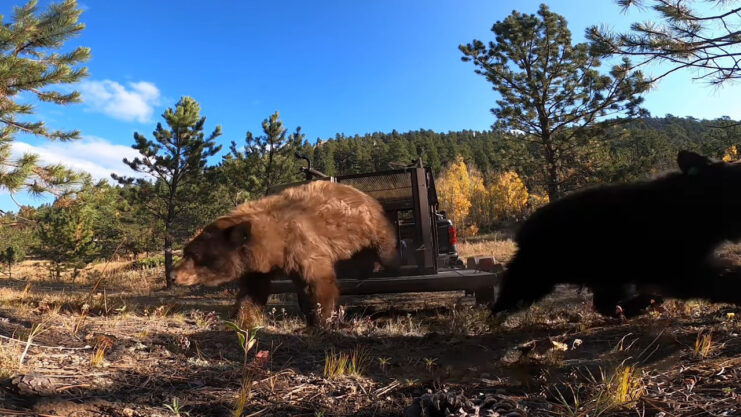
Wyoming: Yellowstone’s Bear Haven
Wyoming is home to the world-famous Yellowstone National Park, a haven for wildlife and one of the best places to view bears in their natural habitat. The park hosts approximately 150 grizzly bears and a large population of black bears, making it an ideal destination for bear enthusiasts. Yellowstone’s diverse ecosystems, including lush meadows, thick forests, and hydrothermal areas, provide ample food sources and shelter for these magnificent animals.
The park’s commitment to conservation has played a significant role in the recovery of the grizzly bear population. When visiting Yellowstone, be sure to attend ranger-led programs to learn more about bear ecology and behavior, and follow bear safety recommendations to minimize any potential conflicts with the park’s furry inhabitants.
Montana: Grizzly Country
Montana, the Treasure State, is renowned for its stunning natural landscapes and thriving wildlife. With approximately 1,800 grizzly bears, it’s no surprise that Montana is often referred to as “Grizzly Country.” Grizzly bears, a subspecies of the brown bear, are iconic symbols of the American West and play a vital role in maintaining the region’s ecological balance. They primarily inhabit the northwestern part of the state, including Glacier National Park and the Northern Continental Divide Ecosystem.
Montana is committed to preserving its bear populations, and grizzly bears are listed as threatened under the Endangered Species Act. As a visitor, you can contribute to conservation efforts by following bear safety guidelines and supporting local wildlife organizations.
If You Find Yourself Face-To-Face with A Black Bear:
In the event that you come face-to-face with a black bear, it’s essential to remain calm and follow some key guidelines to ensure your safety and the bear’s well-being. First, never approach or attempt to feed a bear, as this can be dangerous and may lead to habituation, causing the bear to lose its natural fear of humans. Instead, speak firmly and calmly while maintaining eye contact, signaling that you are not a threat.
Slowly back away without turning your back on the bear and avoid sudden movements, as running could trigger a chase response. If the bear approaches you, try to make yourself appear larger by standing on your tiptoes and raising your arms. Make loud noises, such as shouting or banging pots and pans, to scare the bear away.
In the rare case that a black bear becomes aggressive, fight back using any available objects, such as sticks, rocks, or even your bare hands. Aim for the bear’s face and muzzle to deter it from attacking. Always carry bear spray when venturing into bear country, and know how to use it effectively. By adhering to these guidelines, you can help protect yourself, others, and the bear population while exploring the great outdoors.
FAQs
1. What should I keep in mind while visiting these states for bear watching?
When visiting these states for bear watching, always prioritize safety by following bear safety guidelines, respect the natural habitats of these animals, and support local conservation efforts.
2. Are there any specific times of the year that are best for bear watching?
While bear activity may vary depending on the state and the specific location, generally, the best times for bear watching are during spring and summer when bears are more active and foraging for food.
3. Can I expect to see bears in every state mentioned in this topic?
While the states mentioned have significant bear populations, sightings are not guaranteed. Observing bears in the wild requires patience, proper planning, and adherence to safety guidelines.
4. What precautions should I take when visiting bear country?
It’s important to maintain a safe distance from bears, store food properly, make noise to alert bears of your presence, carry bear spray, and avoid hiking alone. Always follow local guidelines and recommendations for bear safety.
5. What is the role of conservation efforts in the states mentioned?
Conservation efforts in these states play a crucial role in maintaining and protecting bear populations, preserving their natural habitats, and ensuring a sustainable coexistence between bears and humans. These efforts may include wildlife management programs, habitat restoration, educational initiatives, and research.
6. How can I contribute to the conservation of bears and their habitats?
You can contribute to bear conservation by supporting local wildlife organizations, volunteering in conservation projects, and practicing responsible wildlife viewing. Additionally, spreading awareness about the importance of bear conservation and sharing your experiences with others can help promote a greater appreciation for these incredible animals.
7. Can I participate in guided bear watching tours in these states?
Yes, many of the states mentioned offer guided bear watching tours led by experienced professionals who prioritize safety and responsible wildlife viewing. These tours can provide an opportunity to learn more about bear behavior, ecology, and conservation while experiencing the thrill of observing bears in their natural habitats.
8. What other wildlife can I expect to see while exploring bear country in these states?
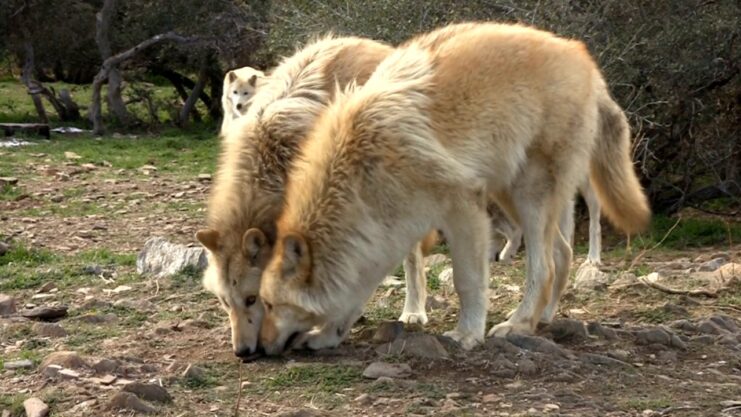
In addition to bears, you may encounter various other wildlife species depending on the state and specific location. This can include deer, elk, moose, wolves, coyotes, foxes, various bird species, and smaller mammals. Always remember to respect the natural environment and observe all wildlife responsibly.
9. Are there any recommended resources for further information on bears and bear watching in the United States?
For further information on bears and bear watching, consider visiting the websites of state wildlife agencies, national parks, and conservation organizations. Additionally, online forums, blogs, and social media groups dedicated to bear watching and wildlife enthusiasts can provide helpful tips, advice, and first-hand experiences to guide your adventure.
Conclusion
The United States is a treasure trove of diverse habitats, making it the perfect home for a variety of bear species. From the icy wilderness of Alaska to the lush forests of Maine, each state we’ve explored offers unique and captivating insights into the lives of these magnificent creatures. By learning about their habitats, populations, and conservation efforts, we can gain a deeper appreciation for these powerful animals and the vital role they play in our ecosystems.
As responsible adventurers, it’s crucial that we respect and protect these bears and their environments, ensuring that they continue to thrive for generations to come. So, whether you’re a seasoned bear enthusiast or a curious traveler, pack your bags and embark on a journey through bear country, and discover the true beauty of these awe-inspiring animals.

